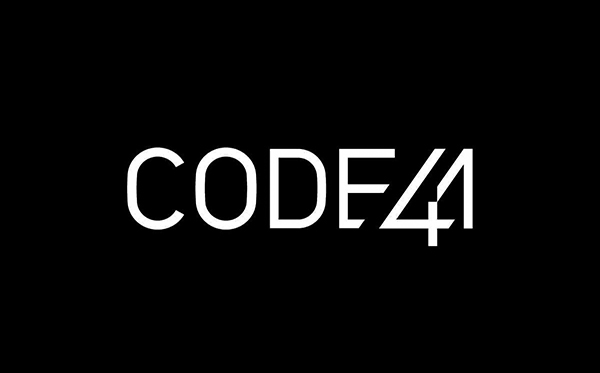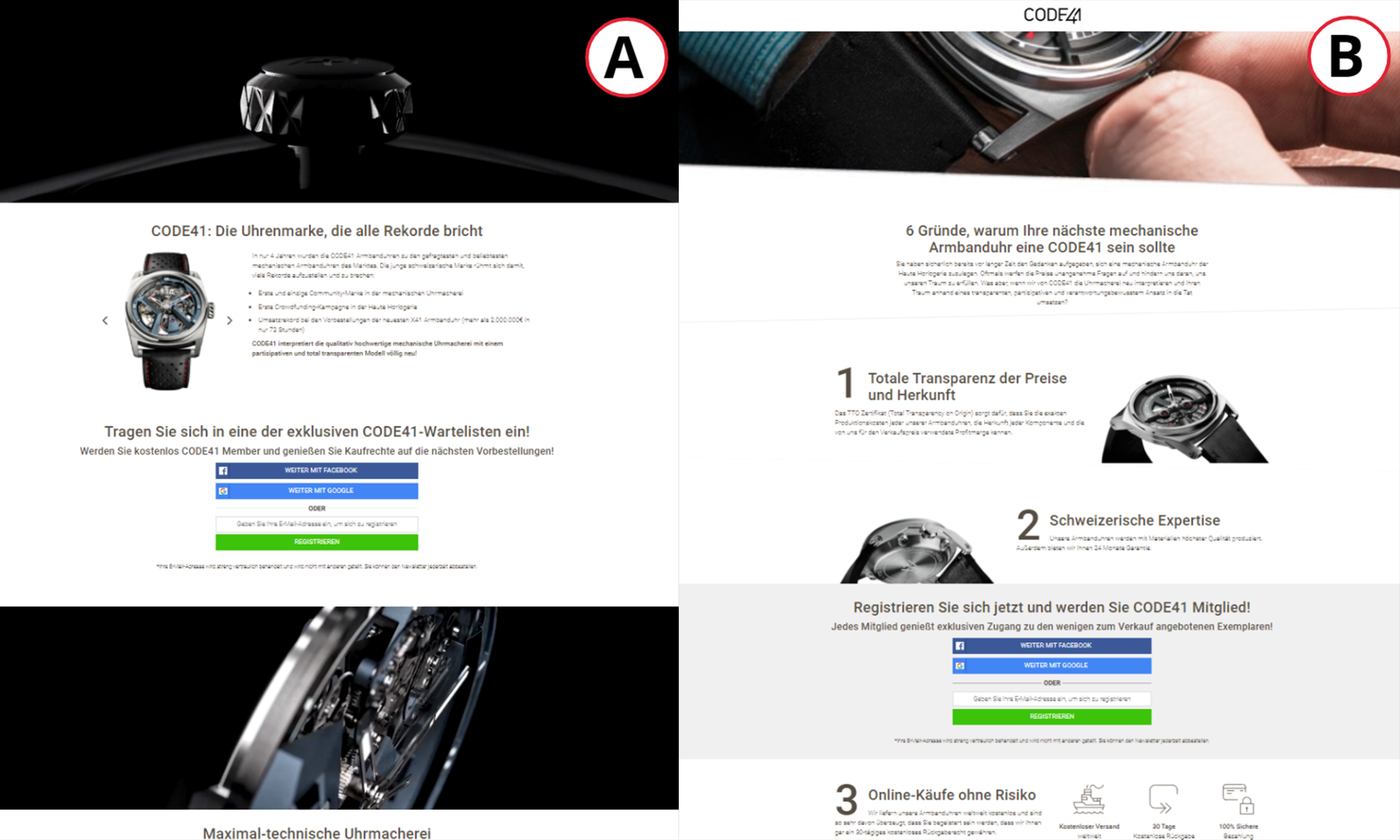Project overview
Initial Position
The innovative Swiss watchmaker CODE41 is a relatively new brand, so its goal is to stake out a position in a highly competitive market sector. The company has been committed to a philosophy of transparency ever since it was founded by Claudio D’Amore in Lausanne in 2016. More specifically, potential customers have direct access to information about production costs, sales margins and the supply chain for individual components. The up-and-coming manufacturer also asks its community of watch enthusiasts to crowdfund launches of new watches, thus providing the company a solid customer base.
CODE41 planned a market launch campaign in Germany. To compete with big, well-known brands in the watchmaking industry, it had to spend its ad budget wisely. CODE41 therefore sought out an efficient solution that would allow it to optimize its website and advertising media continuously. The company opted for a data-driven martech approach designed to identify the messages that would have the greatest impact on the target group and would yield the best results.

- Sector:Accessories/Jewellery/Watches
- Webrepublic customer since:2018
Goals
- Use a testing approach to identify which brand messages resonate best with target groups
- Increase conversion rate by 20%
- Increase average session duration by 30%
"With Google Optimize 360, we're able to continuously test our hypotheses and curate our content to bring the most value to our customers. It has made a tremendous difference in the results of our digital campaigns."Sarah Coppe
Digital Media Manager, CODE41
Measures
CODE41’s hypothesis and concept for its testing approach: if several different USPs with convincing reasons to purchase a mechanical wristwatch from CODE41 were placed on the campaign landing page, the result would be a higher conversion rate. This hypothesis was then tested during a four-month market launch campaign in Germany.
Webrepublic and the client decided that Google Optimize 360 would be the best solution to meet their requirements. The tool allows for the easy implementation of A/B and multivariate testing. It also offers a way to personalize website content based on target group data, not to mention support for the native integration of Google Analytics, which CODE41 had already adopted.
After integrating Google Optimize 360 into the website with a small snippet of code, the site was tested over a period of about two weeks. This involved placing different versions of the brand messages on the landing page and then comparing the results.
Version A (original version) was a call-to-action aimed at getting users to sign up for a waiting list for the new watch model. Version B included USPs aimed at convincing users to become CODE41 members.

Left: Version A (original version), Right: Version B
Results
- + 46.6% conversion rate with version A (original version)
- + 31% average session duration with version A (original version)
The tests showed that version A (original version) achieved a much higher conversions rate, thus refuting the original hypothesis.
Because various combinations of images, text and calls-to-action were used on the testing pages, the impact of individual elements was not measured. As to be expected, however, the call-to-action had a particularly significant impact on the conversion rate, meaning that it was a key element.
Using the more successful versions for the rest of the campaign resulted in a considerably higher conversion rate and average session duration. This, in turn, made it possible to allocate the ad budget most efficiently.
Screenshot: Dashboard of test results in Google Optimize 360
The tool proved to be so beneficial that the company will continue using it to test individual page elements. CODE41 can then determine exactly which elements influence user behavior and how – and, for example, whether users in different countries respond differently.
"When it comes to selecting content for businesses, opinions and personal preferences often stand in the way of significant performance gains. Entering a new market is an especially good time to perform tests and let the data speak for itself."Urs Angst
Head of Marketing Technology, Webrepublic AG





